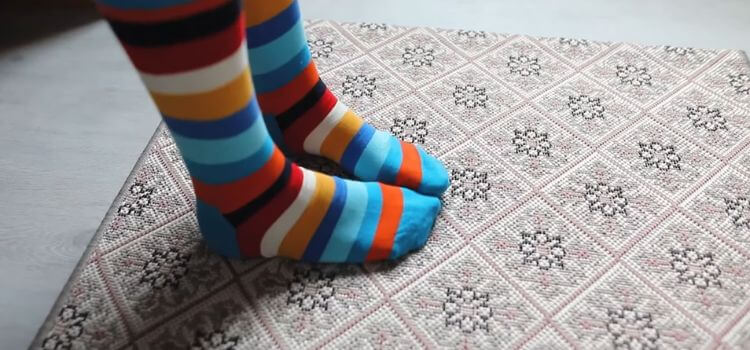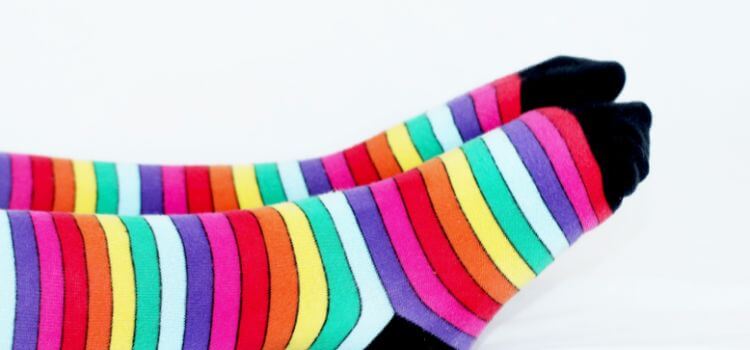As an Amazon Associate I earn from qualifying purchases.

In the perpetual quest for warmth during colder seasons, our feet often bear the brunt of chilly temperatures, leaving us to ponder solutions beyond just thick socks and warm slippers. Enter the realm of compression socks, a rising star in the world of comfort and circulation.
But the question lingers: do compression socks truly hold the key to combating cold feet? In this exploration, we delve into the science, anecdotes, and practicalities surrounding the use of compression socks as a remedy for the perennial issue of icy toes.
Join us to unravel the mysteries behind these snug companions and discover whether they live up to the promise of keeping our feet comfortably warm in the face of winter’s chill.
Do Compression Socks Help With Cold Feet?
Whether compression socks truly help with cold feet is a subject of growing interest and inquiry. These specialized socks, designed to apply gentle pressure to the legs, have long been recognized for their efficacy in improving circulation and reducing swelling.
The enhanced blood flow they promote is thought to contribute to maintaining warmth in the extremities, including the feet. Many individuals who face challenges with cold feet, whether due to poor circulation or exposure to colder environments, turn to compression socks in the hope of finding relief.
While anecdotal evidence suggests positive outcomes, scientific studies on the direct correlation between compression socks and cold feet are still evolving. Exploring the mechanisms at play and delving into both the experiences of users and the insights of medical professionals can shed light on the effectiveness of compression socks in addressing the perennial issue of chilly toes.
Why Choose Compression Socks for Cold Feet?
Choosing compression socks for cold feet proves to be a strategic and beneficial decision owing to their multifaceted approach to enhancing foot comfort. These socks excel in promoting better blood circulation, a fundamental factor in preventing and alleviating the discomfort of cold feet.
The gentle pressure applied by compression socks aids in optimizing blood flow, reducing the risk of blood pooling in the extremities and ensuring a consistent supply of warmth. Additionally, compression socks contribute to minimizing swelling, a common issue that can exacerbate cold sensations. The snug fit of these socks also acts as a thermal insulator, trapping the body’s natural warmth close to the skin.
By addressing both circulatory and thermal aspects, compression socks emerge as a versatile solution for those seeking relief from the perennial chill in their feet. Whether for individuals with poor circulation, exposure to colder climates, or as a proactive measure for enhanced foot well-being, the choice of compression socks is a practical and effective means to keep your feet comfortably warm.
Why Are My Feet Always Cold?
The perennial question of why one’s feet always seem to be cold encompasses a multitude of potential factors. Poor circulation often stands out as a primary culprit, as it hampers the efficient flow of blood to the extremities, leading to a drop in temperature.
Additionally, environmental factors play a pivotal role; exposure to cold weather or walking on cold surfaces can swiftly rob the feet of warmth. Certain medical conditions, such as Raynaud’s disease, diabetes, or hypothyroidism, may also contribute to chronically cold feet by affecting blood flow or nerve function.
Lifestyle choices, including sedentary habits or wearing tight footwear that restricts blood flow, can exacerbate the problem. Understanding the interplay of these various elements is crucial for finding effective solutions to the age-old issue of perpetually cold feet, whether through lifestyle adjustments, improved circulation strategies, or the use of specialized garments like compression socks.
Poor Blood Circulation
Insufficient blood circulation presents a substantial barrier to the continuous flow of oxygen crucial for limb mobility and comfort. The familiar sensation of “pins and needles” in the feet after prolonged immobility stems directly from compromised blood flow.
A primary culprit is atherosclerosis, where arteries become obstructed by fatty plaques, narrowing and hardening them. This situation increases the likelihood of blood clot formation, potentially obstructing the smooth flow of blood to essential organs.
Age, smoking, a high-fat diet, obesity, and even low body fat levels contribute to atherosclerosis. Conditions like diabetes compound circulatory challenges, emphasizing the intricate link between overall health and robust blood circulation
Nerve Problems
Nerve damage, or neuropathy, can result in an unexpected sensation of coldness in the feet. This occurs when the nerves responsible for detecting cold become impaired, leading to a diminished ability to accurately perceive temperature.
As a result, individuals with neuropathy may experience a persistent feeling of coldness in their feet, regardless of the actual environmental conditions. It is essential to comprehend and address neuropathy to effectively handle these sensory disturbances and enhance the overall health of the feet.
Medical Conditions
Various medical conditions are associated with poor circulation, contributing to the sensation of cold feet. These conditions encompass diabetes, autoimmune disorders like anemia, heart disease, hormonal imbalances, venous insufficiency, and Raynaud’s disease.
Raynaud’s disease, alternatively termed Raynaud’s phenomenon, affects the blood vessels in the fingers and toes. It induces constriction or closure of these vessels in response to temperature fluctuations, occupational exposures, or heightened excitement.
This restriction diminishes blood flow to the feet, resulting in a noticeable decrease in temperature and the sensation of coldness.
Do Compression Socks Help with Cold Feet?

Compression socks offer a multifaceted approach to combating cold feet, leveraging their unique design to address various contributing factors. Firstly, these specialized socks exert gentle pressure on the legs, promoting enhanced blood circulation.
By promoting the smooth return of blood to the heart, compression socks prevent blood pooling in the extremities, notably the feet, reducing the likelihood of cold sensations. Enhanced blood circulation guarantees a consistent delivery of oxygen and nutrients to the cells, contributing to the holistic well-being of the feet.
Additionally, compression socks can aid in reducing swelling, a common issue that may contribute to discomfort and temperature fluctuations. Beyond the physical benefits, the snug fit of compression socks provides a layer of insulation, helping to retain the natural warmth generated by the body.
While they may not be a standalone solution, incorporating compression socks into one’s routine can be a valuable component in the pursuit of warmer, more comfortable feet, especially for those prone to circulation issues or exposed to colder environments.
Do Compression Socks Keep Your Feet Warm?

Compression socks play a vital role in keeping your feet warm through a combination of physiological and thermal mechanisms. The snug fit of compression socks promotes improved blood circulation, ensuring a steady flow of warm blood to the extremities.
By reducing swelling and preventing blood from pooling in the feet, these socks contribute to maintaining a comfortable and consistent temperature. Moreover, the compression effect supports the veins in efficiently transporting blood back to the heart, aiding in the overall regulation of body temperature.
Beyond their circulatory benefits, compression socks act as a thermal barrier, trapping and retaining the natural warmth generated by the body. This dual-action approach makes compression socks an effective choice for individuals seeking to ward off chilly feet, whether due to circulatory issues, exposure to colder environments, or simply the desire for extra warmth and comfort. While they may not be a cure-all, incorporating compression socks into your routine can undoubtedly be a proactive step toward ensuring your feet stay snug and warm.
Finding The Best Compression Socks For Poor Circulation And Cold Feet
Finding the best compression socks for poor circulation and cold feet involves thoughtful consideration of specific features tailored to address these challenges. Optimal compression levels are key, striking a balance between effectiveness and comfort.
Search for socks featuring graduated compression, exerting more pressure at the ankle and gradually decreasing as they extend towards the calf. This design enhances blood circulation, crucial for those dealing with poor circulation issues.
The choice of material is crucial – opt for fabrics that are breathable and moisture-wicking to ensure your feet stay dry and comfortable. Consider socks with additional thermal properties for added warmth. Brands that prioritize ergonomic design and seamless construction can minimize potential irritation, crucial for individuals with sensitive skin.
Ultimately, the best compression socks for poor circulation and cold feet are those that cater to your specific needs, promoting comfort, warmth, and improved blood flow to enhance overall foot health.
Conclusion
In conclusion, the choice of compression socks for addressing cold feet proves to be a well-rounded and effective solution. By combining the benefits of improved blood circulation, reduced swelling, and thermal insulation, these specialized socks offer a comprehensive approach to enhancing foot comfort.
Whether dealing with poor circulation, exposure to colder environments, or simply desiring extra warmth, compression socks present a versatile option. Consideration of personal needs and preferences is crucial when choosing compression socks, ensuring the ideal blend of comfort and effectiveness. Embracing the advantages of compression socks goes beyond mere symptom relief; it signifies a proactive step toward promoting overall foot health and well-being.
As a versatile and accessible solution, compression socks stand as a practical choice for those seeking to banish the chill from their feet, providing a reliable and comforting remedy for cold toes.
Amazon and the Amazon logo are trademarks of Amazon.com, Inc, or its affiliates.


Leave a Reply